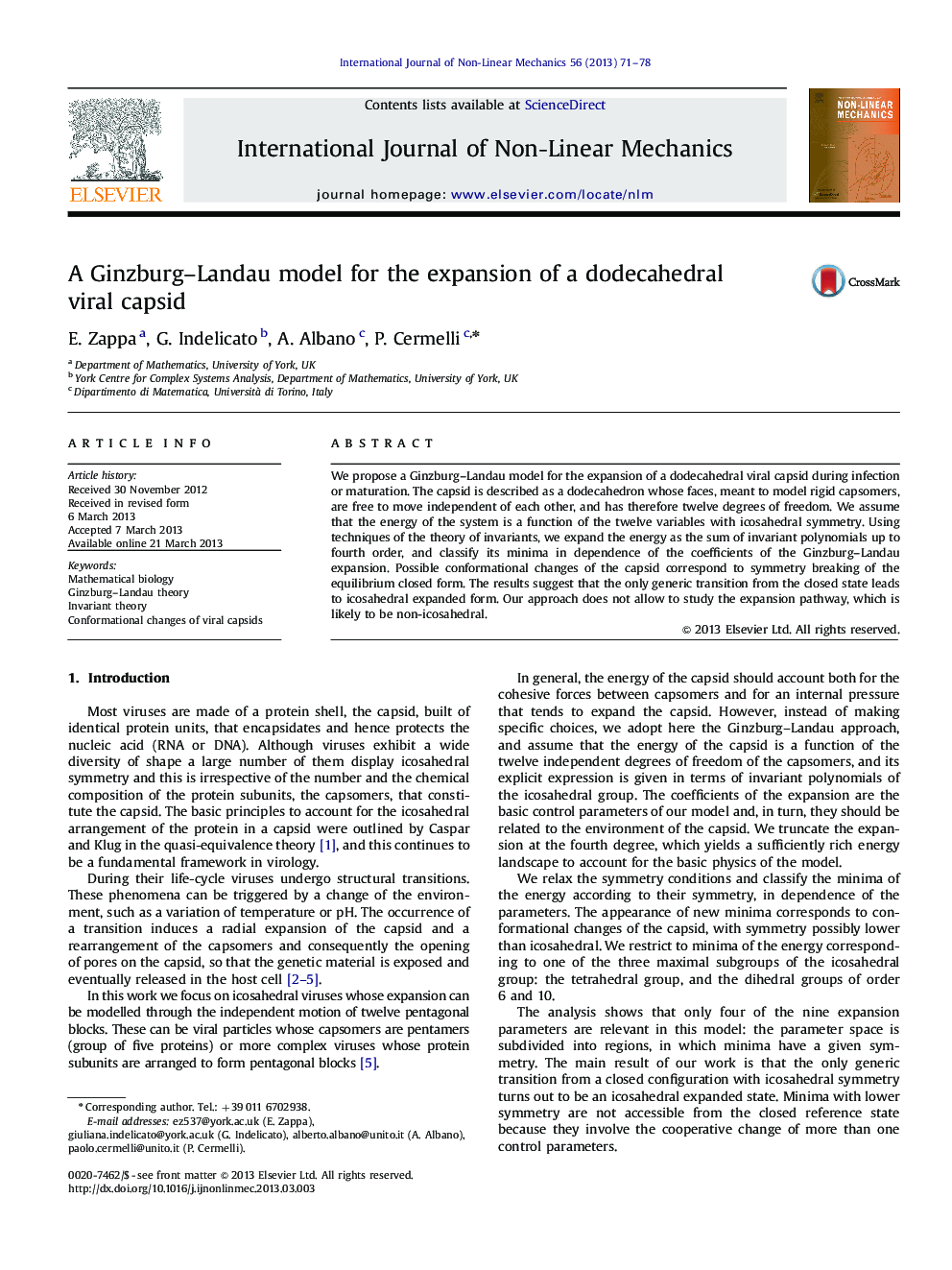| Article ID | Journal | Published Year | Pages | File Type |
|---|---|---|---|---|
| 787953 | International Journal of Non-Linear Mechanics | 2013 | 8 Pages |
Author-Highlights•A model for the conformational changes of an icosahedral viral capsid is studied.•The energy is written as a sum of polynomials invariant under the icosahedral group.•The minima of the energy are identified to the stable configurations of the capsid.•We enumerate all possible configurations with low symmetry.•We show that generic transitions lead to an icosahedral stable expanded state.
We propose a Ginzburg–Landau model for the expansion of a dodecahedral viral capsid during infection or maturation. The capsid is described as a dodecahedron whose faces, meant to model rigid capsomers, are free to move independent of each other, and has therefore twelve degrees of freedom. We assume that the energy of the system is a function of the twelve variables with icosahedral symmetry. Using techniques of the theory of invariants, we expand the energy as the sum of invariant polynomials up to fourth order, and classify its minima in dependence of the coefficients of the Ginzburg–Landau expansion. Possible conformational changes of the capsid correspond to symmetry breaking of the equilibrium closed form. The results suggest that the only generic transition from the closed state leads to icosahedral expanded form. Our approach does not allow to study the expansion pathway, which is likely to be non-icosahedral.
